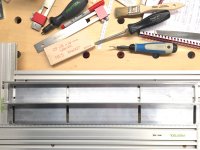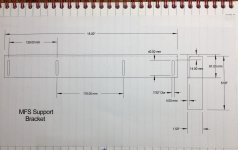DeformedTree
Member
- Joined
- May 19, 2018
- Messages
- 1,397
Alex said:DeformedTree said:But they generally learn to move on from cm because else where as has been mentioned by myself and others it's either inches or mm. Also living in country that is stuck with inches I know all too well the issues that come up with cm. If you try to convince people of the value of the metric system, a centimeter is seen as just a different sized inch, it's different but doesn't help them any any way, it's just different.
Nobody is moving on from cm. There are no issues with cm. Where do you get these ideas? Certainly not in places that actually use metric. Conversion between mm, cm and m is done all day without effort or confusion.
The scientific community made the SI system to avoid confusion because their high end applications required more clarity in cross-communication. But the scientific community is just a very small percentage of the world, and for the vast majority that are the rest it doesn't matter.
I think you are still missing the original point I brought up. It's not that one can't convert between cm and mm easily, obviously that is extremely simple. It's when you make a mistake such as what happens with a tape measure. If you are going to mark 1106mm , you look at the tape that you have pulled out past a meter and see "106" you mark it because it is what you are going for. You're not thinking that you just marked 1060mm. You are now 54mm off, this isn't because you don't know a cm is 10mm. Typical metric tapes don't have markings set up as you would expect. If they aren't going to just count from 0mm up to how many mm it goes to, you are expecting a repeat, such as ever meter, it counts from 0mm again and works back up to 999mm and then repeats after the next meter mark. The fastcap tape keeps counting up in 100mm increments, so 100mm, 500mm, 1300mm, etc. Every 100mm the marks reset and count from zero up to the next 100mm. It works like you would expect a tape to work. If you need 923mm, you see (900), and then advance to (20) go 3 more ticks, you find the mark the same way we speak number NineHundred, Twenty, Three. On a cm tape you are going to 92 and then going 3 marks more. It's not natural, we don't say NinityTwo-Three to say 923. A proper mm tape works the way we speak, which is key. We say Eighteen, not One-Eight.


